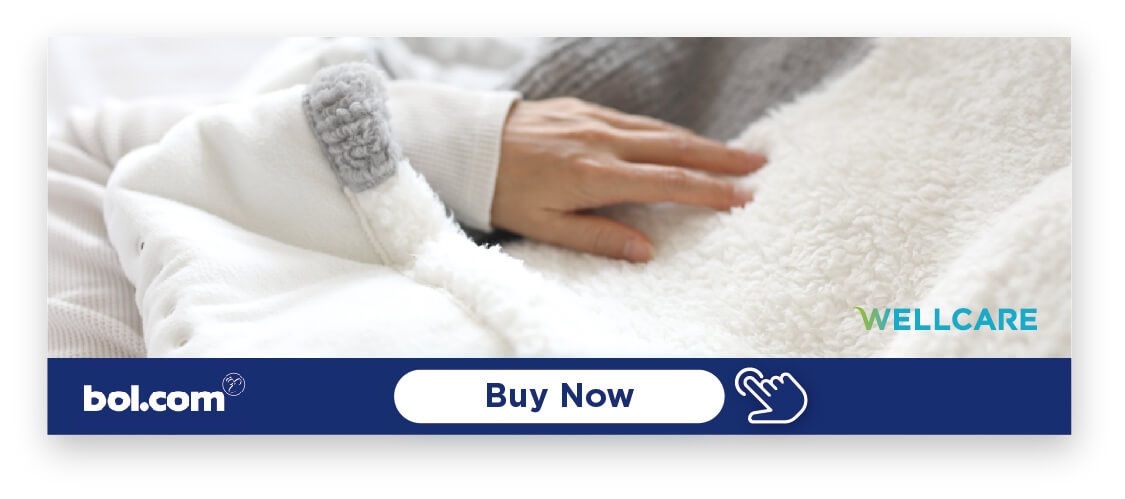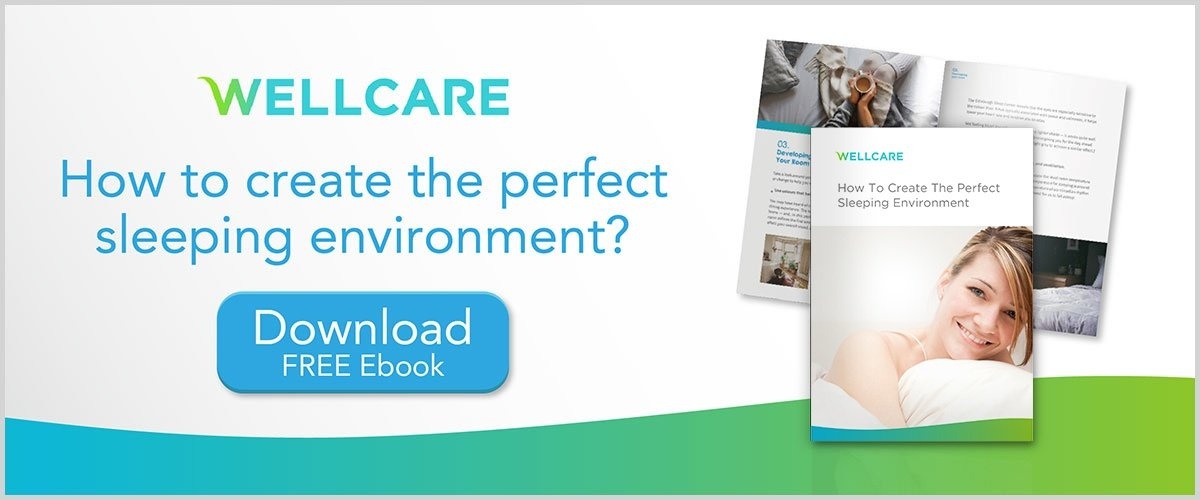2022%20Pillar%20Page_Body%20Ache/Sleep-with-cold.jpeg?width=1200&height=800&name=Sleep-with-cold.jpeg)
Millennials have become famously branded as the “burnout generation,” unable to find time to clear out their thoughts and stop working for the day. Because of this, they are more likely to develop stress-induced illnesses and mental health issues. In a study under the Health and Safety Executive (HSE) of the United Kingdom, scientists found that people who are stressed more often are more likely to get sick.
When exposed to cold-causing germs, the body is unable to protect itself. Common cold symptoms usually appear one to three days after, differing from person to person. This can include:
- Runny or stuffy nose, congestion
- Sore throat, that can lead to cough
- Slight body aches or a mild headache
- Sneezing
- Low-grade fever
- Malaise
If you’re working long hours, doing multiple jobs, and sneezing every few minutes, it may be time to evaluate your physical and mental health. Take a break, relax, and turn in early for the night.
Sleeping with a Congested Nose
We all know what it’s like to sleep with a stuffy nose. Because we’re used to breathing through our nose, it’s unnatural for us to inhale and exhale through our mouths. Combined with the muscle pains and headache, trying to relax while sick can be a difficult feat. Here are ten steps to prepare your body for the night.
- Avoid alcohol and eat chicken soup
Though alcohol is known to warm the body and help people sleep soundly, it’s best to avoid this before going to bed. Because alcohol is a diuretic, your body reacts by flushing out fluids from your blood, kidneys, ureters, and bladders at a faster rate than other drinks. This causes you to become dehydrated.
Instead, cook up some chicken soup for dinner. The steam from that can help decongest your nose, and you can stay hydrated all night. According to the University of Nebraska Medical Center, chicken soup also has anti-inflammatory effects that can ease your symptoms and help you recover faster.
If you’re living on your own, It’s helpful to know that the canned version works just as well as a homemade one. It can save you a lot of time if you want to head to bed right away.
- Have a warm bath
While taking a hot shower can loosen up some muscles and help you relax, the steam from the hot water can ease congestion and help you breathe easier. Make sure that the water is hot without scalding your skin, and keep the bathroom door closed to let the steam accumulate.
If you’re too weak to stand, you can sit in your bathroom and leave the shower running with the door closed. The effect would be the same.
If you have a bathtub, then all the better. Drop some shower tablets with peppermint or eucalyptus oil for an additional cooling effect and muscle soothing.
- Drink something warm
There will be times when we are too sick to make ourselves dinner. If you want to stay in bed all day, we recommend drinking something warm to soothe your sore throat and loosen up your stuffy nose.
Decaffeinated tea such as chamomile tea, ginger tea, and peppermint, taste great with honey. Aside from being a natural sweetener, honey is also known for its anti-bacterial and anti-inflammatory properties. On some occasions, people would swallow a tablespoon’s worth of it to ease dry cough symptoms, coating the throat to minimize scratchiness.
Decaffeinated black tea is also effective in treating common cold symptoms. According to a study under the FASEB Journal, this tea has a cough-suppressing compound called theobromine that works better than over-the-counter cough medicines with codeine or dextromethorphan.
You can also have a warm glass of lemon tea or lemon water, both of which have immunity-boosting properties. When drinking on an empty stomach, however, people who are prone to acid reflux and nausea should take this in moderation.
- Take your meds
By the end of a long day, tiring activities may worsen your headache and body pain. Taking a non-steroidal anti-inflammatory drug (NSAID) can relieve muscle aches and inflammation and reduce fever. Drugs such as ibuprofen and naproxen and mefenamic acid can be purchased over-the-counter or through your doctor’s prescription.
NOTE: Always follow the label for the recommended dosage and follow instructions carefully. If you have a fever, don’t take NSAIDs any more than three days. If your body still hurts after ten days of taking NSAIDs, see your doctor for medical counsel.
In some cases, it’s better to drink certain medications during the day. Certain medications contain the active ingredient called pseudoephedrine, which can lead you to feel hyperactive and unable to sleep. Take note also that medicines with more than 720 mg of pseudoephedrine requires a doctor’s prescription.
- Gargle salty water or saline solutions
Should you not have any decongestants available, you can create a saline solution to ease your sore throat and prevent your infection from worsening. This naturally occurring compound, when ingested, helps your small intestine absorb sugar, water, and amino acids. So it comes as no surprise that it also has health benefits when gargled.
Simply mix ¼ or ½ teaspoon of salt with eight ounces of water. Once all the particles have dissolved, gargle the mixture, allowing it to reach the back of your throat and holding it there for as long as you can. Finally, let the mixture swish around your mouth before spitting it out.
- Use a saline nasal rinse
In connection with the previous number, saline solutions can also be used to unclog stuffy noses. In a study under the Cochrane Library, saline rinses can reduce your congestion, flush out mucus and germs, and facilitate easier breathing. Before following the previous instructions, make sure that your water has been either sterilized, distilled, or previously-boiled. As the water may enter your nasal cavity, it’s important to prevent further infection from tap water.
We recommend using either a neti pot, squeeze bottle, or nasal bulb for this activity, instead of snorting the saline water from your hands.
Start your nasal rinse by leaning over a sink, making sure that your head is sideways. Make sure that your nose and lips are levelled out to prevent the solution from dripping down your mouth or throat.
Next, insert the spout into your upper nostril, allowing the solution to pour into your nasal cavity and drain out of the lower nostril. You can tilt your head the other way and pour the solution into your other nostril.
Repeat the process until the mucus has softened and drained from your nose.
NOTE: The Food and Drug Administration does not recommend this for children under two years old unless recommended by your pediatrician.
- Keep your bedroom cool
The temperature of your room affects the quality of your sleep. What more when you have a fever and a cold? When your body prepares for sleep, your internal temperature drops slightly and rises back before you wake up. This drop makes you feel drowsy. Because of this, experts recommend setting a cooler temperature to support the eventual change of your internal temperature. At 16-18 degrees Celsius or 60.8-64.4 degrees Fahrenheit, you can sleep more comfortably after a warm shower.
Though it seems counterintuitive, it’s better to keep your room cool when you have a cold. Using extra blankets is an easier solution, because you can shove them off when you start sweating. If you were to turn your thermostat up, you’re more likely to wake up feeling uncomfortable and sweaty. You’re also less likely to reach the deep sleep stage where your body begins repairing itself.
If your air conditioning is too cold for your preference, turn your ceiling fan on or leave your windows open,
- Turn your humidifier on
Apart from the temperature, your room’s humidity is important, too. Dry air can leave your throat parched and can worsen your symptoms. Use your humidifier to moisturize your sinuses while you sleep.
Make sure to fill up your humidifier with purified or distilled water, so that you are inhaling clean air. After a day’s use, clean its parts to prevent bacteria or mold from growing.
- Rearrange your pillows
Elevating your head with two or three pillows will prevent mucus from gathering in your nasal cavity and keep you from developing post nasal drip.
After relieving your nasal congestion, we recommend keeping your head higher than the rest of your body. Don’t add too many pillows that may cause you neck or back pain.. If you think that your pillows are too fluffy and bother you at night, purchase a wedged pillow instead.
- Plug in your electric blanket
While readying for bed, warm your electric blanket up. Its warmth can help you relax and fall asleep quickly, easing any muscle pains left from the day. The 4D DWF blanket allows simple blankets to become more comfortable, breathable, and more efficient at temperature control than most electric blankets. A stable, restful temperature makes for better sleep, and far better awakenings.
How to Use Electric Blankets Safely
Shortly after World War II, a Navy engineer in the General Electric Co. named George Crowley submitted a patent for an electric blanket. Born from the flying suits he developed for pilots that electrically heated up at higher altitudes. During its first commercial years, many customers filed lawsuits against General Electric Co. due to bedroom fires. When Crowley is called as a witness, he holds onto the belief that his electric blankets were safe, despite the wires inside the blankets overheating.
After his death, Crowley’s patent for the device that regulated the blanket’s temperature and prevented overheating would be approved.
While it is safe to use latest models of electric blankets, people still believe that the product can cause fires. However, people fail to note that the blankets were already 10 to 35 years old, needing replacement. Back then, people were still unsure of how to take care of their electric blankets. Through modern day technology, we now know the limits of these devices.
People are also concerned that electric blankets cause cancer because of the electromagnetic waves they emit. While this is a valid concern during the 80s or 90s, today’s electric blankets are manufactured with lower EMF and are shown to have little negative effect on our bodies.
Here are some tips that can help you stay comfortable and safe while using your electric blanket:
- Unplug your blanket after you use it. This gives the device some time to cool down before your next use.
- Roll your electric blanket when storing it, you can also choose to fold it like the way it was originally delivered inside the package. Place the folded electric blanket into the original box, the packaging was designed to leave enough space for internal wires. Remember not to put anything heavy on top of the box because it might damage the internal components.
Improper Folding or crumpling your blanket will affect the quality of the wires. If you have a larger space, you may also opt to hang it in a cool, dry place. - Follow manufacturer’s instructions when cleaning or washing your electric blanket. Each model is made differently.
- Replace your electric blankets once they hit a decade. No matter how high-quality it is. This can prevent overheating or wire damage.
Getting enough rest is important for recovery. Listen to what your body needs, whether that would be a nasal rinse, a warm cup of tea, or some anti-inflammatory meds. Then, improve your sleeping environment. Open the windows, turn your electric blanket on, and settle in for a peaceful night. We’re sure that you’re going to wake up feeling better than you did the day before.
At Wellcare, we believe in advocating spreading care to everyone around us. Our electric blanket has the BBC Design that keeps the blanket at normal body temperature, bringing warmth that does not scorch our bodies while we sleep. We are on a mission to let each of our customers experience warmth, the way we envision it.
We also wrote a full book on how to create the perfect sleeping environment to help you get a better night of sleep. This e-book is currently available for FREE, click on the link below to download now!


.png?width=512&name=united-kingdom%20(1).png)


